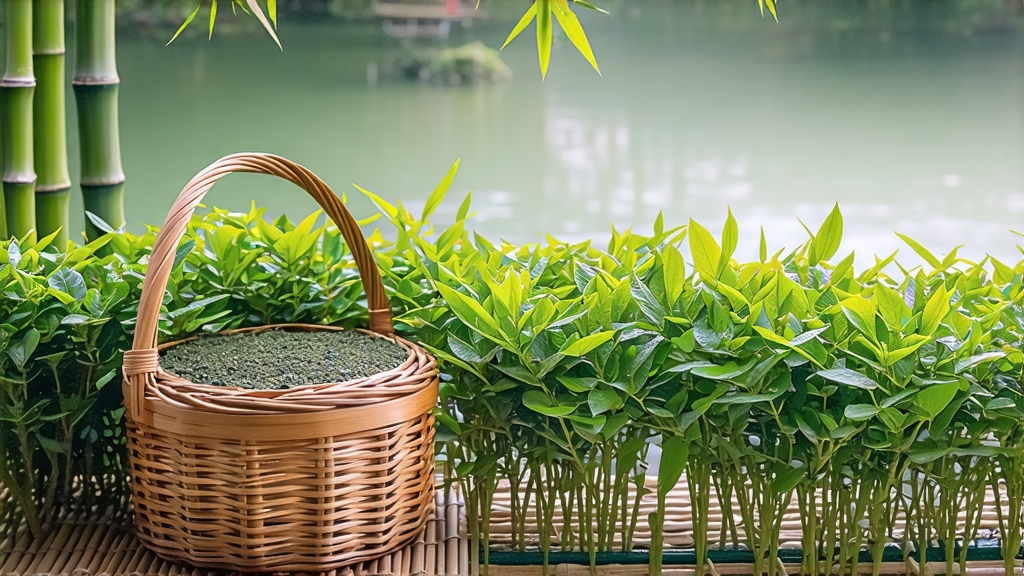
Longjing—often spelled Lung Ching outside China—is not merely a green tea; it is a liquid manuscript of Hangzhou’s hills, a sip of Ming-dynasty poetry, and a mirror in which Chinese aesthetics find their clearest reflection. To understand Longjing is to eavesdrop on thirteen centuries of conversations between monks, emperors, poets, and farmers, all agreeing that a single leaf can hold the fragrance of a nation.
History: From Temple to Throne
Legend places the first planting on Lion Peak (Shi Feng) in the year 770 CE, when a Zen monk sowed tea seeds brought from Yunnan along the mist-drained slopes above West Lake. The temple’s spring water, shaped like a dragon’s well, gave the tea its name. By the Song dynasty the leaf was tribute; by the Ming it was obsession. The Qianlong Emperor, visiting in 1751, so adored the tea plucked before Qingming festival that he conferred imperial status on the eighteen bushes still growing today outside the Hugong Temple. Those bushes are now heritage monuments, fenced yet never clipped, their spring offering auctioned for more than the price of gold per gram.
Micro-terroirs: Four Slopes, Four Characters
Chinese connoisseurs divide authentic West Lake Longjing into four micro-appellations, each a hillside village with its own dialect of soil and sky. Shi Feng (Lion Peak) rises highest, its quartz-rich soil and daily cloud mantle producing the most amino acids; the leaf is tiny, jade-green, almost square, with a chestnut-sweet aroma that lingers like a bell. Mei Jia Wu, the broad valley ploughed by buffalo, gives a fuller body and orchid nose. Weng Jia Shan offers a sharper, almost flinty note, while Longjing Village itself—now ringed by boutique hotels—delivers a balanced, textbook cup. Anything grown outside these 168 square kilometres may be called “Zhejiang Longjing,” but never “West Lake,” a distinction guarded as fiercely as French AOC law.
Cultivars: Beyond the Classic
The traditional cultivar is Qunti, the “community bush,” seed-propagated and genetically diverse, yielding small but intensely fragrant leaves. In 1970s agronomists released Longjing #43, a clonal variety that sprouts five days earlier, tolerates machine harvesting, and produces a brighter, almost neon infusion. More recent experiments with Zhongcha 108 and even Anji-white grafts aim for frost resistance, yet purists still prize Qunti for its lingering “sweet return” (hui gan). Each cultivar demands its own choreography of heat and hand.
Craft: The 10-Motion Pan-Firing Ballet
Longjing is the only famous Chinese green tea still shaped entirely by hand in a hot wok. A master with thirty years’ experience works at 200 °C, bare-handed, using ten distinct motions—grasp, shake, rub, throw, fan, press, push, buckle, pat, and grind—lowering the temperature every three minutes. Within twenty-five minutes the leaf loses half its weight, its edges flatten against the wok’s iron skin, acquiring the characteristic “flag-and-gun” silhouette: one tender bud pressed against a single elongated leaf, sharp as a miniature spear. The firing is stopped while internal moisture still hovers around 5 %, locking in the signature chestnut-toasty note that later infusions will coax into broad bean and sweet corn.
Harvest Calendar: The 48-Hour Race
Plucking begins when the air temperature holds steady above 10 °C, usually between 15 and 25 March. The apex grade, Ming-qian (before Qingming), is picked when each bud still wears its fish-scale down and the leaf has not yet unfurled—yielding only 600 g per mature bush. Yu-qian (before Grain Rain) follows two weeks later, offering bigger leaves and a bolder cup but half the price. After 5 May the leaf is considered “spring tail,” still fragrant yet lacking the ethereality that drives connoisseurs to pay US $2 000 for 100 g of Shi Feng Ming-qian.
Roasting & Resting: The Invisible Second Act
After pan-firing the tea is not yet finished. It is left for two weeks in lime-lined earthen jars; the alkaline environment scavenges residual moisture while allowing aromatic aldehydes to polymerize into deeper complexity. A second, gentler roasting at 60 °C just before market